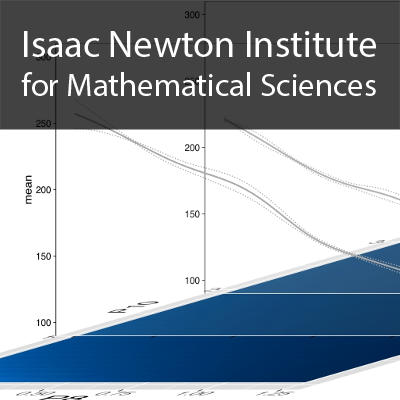Uncertainty Quantification from a Mathematical Perspective
59 mins 17 secs,
863.72 MB,
MPEG-4 Video
640x360,
29.97 fps,
44100 Hz,
1.94 Mbits/sec
Share this media item:
Embed this media item:
Embed this media item:
About this item

| Description: |
Smith, R (North Carolina State University)
Monday 8th January 2018 - 11:30 to 12:30 |
|---|
| Created: | 2018-01-10 16:11 |
|---|---|
| Collection: | Uncertainty quantification for complex systems: theory and methodologies |
| Publisher: | Isaac Newton Institute |
| Copyright: | Smith, R |
| Language: | eng (English) |
| Distribution: |
World
|
| Explicit content: | No |
| Aspect Ratio: | 16:9 |
| Screencast: | No |
| Bumper: | UCS Default |
| Trailer: | UCS Default |
| Abstract: | From both mathematical and statistical perspectives, the fundamental goal of Uncertainty Quantification (UQ) is to ascertain uncertainties inherent to parameters, initial and boundary conditions, experimental data, and models themselves to make predictions with improved and quantified accuracy. Some factors that motivate recent developments in mathematical UQ analysis include the following. The first is the goal of quantifying uncertainties for models and applications whose complexity precludes sole reliance on sampling-based methods. This includes simulation codes for discretized partial differential equation (PDE) models, which can require hours to days to run. Secondly, models are typically nonlinearly parameterized thus requiring nonlinear statistical analysis. Finally, there is often emphasis on extrapolatory or out-of-data predictions; e.g., using time-dependent models to predict future events. This requires embedding statistical models within physical laws, such as conservation relations, to provide the structure required for extrapolatory predictions. Within this context, the discussion will focus on techniques to isolate subsets and subspaces of inputs that are uniquely determined by data. We will also discuss the use of stochastic collocation and Gaussian process techniques to construct and verify surrogate models, which can be used for Bayesian inference and subsequent uncertainty propagation to construct prediction intervals for statistical quantities of interest. The presentation will conclude with discussion pertaining to the quantification of model discrepancies in a manner that preserves physical structures. |
|---|---|
Available Formats
| Format | Quality | Bitrate | Size | |||
|---|---|---|---|---|---|---|
| MPEG-4 Video * | 640x360 | 1.94 Mbits/sec | 863.72 MB | View | Download | |
| WebM | 640x360 | 653.41 kbits/sec | 283.79 MB | View | Download | |
| iPod Video | 480x270 | 522.26 kbits/sec | 226.77 MB | View | Download | |
| MP3 | 44100 Hz | 249.73 kbits/sec | 108.56 MB | Listen | Download | |
| Auto | (Allows browser to choose a format it supports) | |||||

